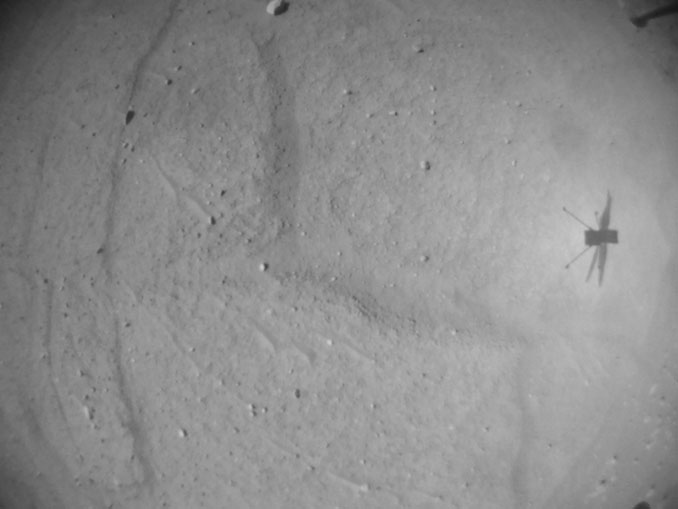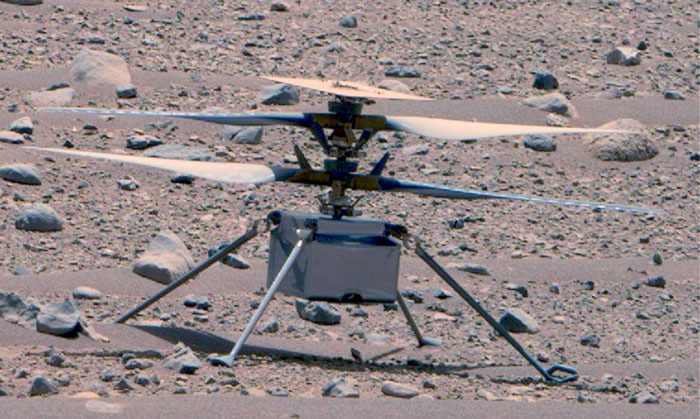
NASA engineers are prepping the miniature Mars helicopter Ingenuity for its 53rd flight across the surface of the Red Planet after re-establishing contact following a two-month radio blackout.
The silence was due to a Martian hill blocking line-of-sight communications with the Perseverance rover — which acts as a conduit between the helicopter and ground controllers at NASA’s Jet Propulsion Laboratory (JPL) in California.
Ingenuity, the first craft to ever fly across the surface of another planet, has made aerial scouting flights above the Martian surface seem almost routine. It embarked on its latest mission on April 26 but contact was lost at the end of the 1,191-foot (363-meter), 139-second flight.
The communications loss, following one of six days earlier the same month, was anticipated and the Ingenuity team had already developed re-contact plans for when the rover would drive back within range.
Following a painstaking wait the 52nd flight of Ingenuity was officially logged as a success when contact was re-established on June 28 after Perseverance crested the hill and could see Ingenuity again.
“Our goal is to keep Ingenuity ahead of Perseverance and this occasionally involves temporarily pushing beyond communication limits,” said a relieved Ingenuity team leader Josh Anderson after announcing contact had been re-established.
“The portion of Jezero Crater the rover and helicopter are currently exploring has a lot of rugged terrain, which makes communications dropouts more likely.”
After 63 days and with the flight now officially logged as a success the attention of Ingenuity’s controllers is focussed on a series of health checks ahead of Flight 53 which could take place with the next two weeks.
“The target is an interim area to the west, from which the team plans to perform another westward flight to a new base of operations near a rocky outcrop the Perseverance team is interested in exploring,” added Anderson.

The Mars helicopter’s first flight took place on April 19, 2021, some two months after it landed in Jezero Crater attached to the Perseverance rover. Since then it has far exceeded its originally planned technology demonstration mission of just five flights.
Ingenuity is the first machine to achieve powered flight across the skies of an alien world — a significant accomplishment given the thin Martian atmosphere that makes it difficult to achieve lift. To overcome this it is equipped with enlarged, specially shaped blades that rotate 10 times faster than what is needed to fly on Earth.
At the outset, engineers hoped Ingenuity would be able to show that a solar-powered drone could function in the extremely thin atmosphere of Mars — but the experiment has ended up wildly exceeding expectations and the craft is no longer a simple technology demonstrator but has become an integral part of Perseverance’s operations.
The craft, which weighs four pounds (1.8 kg), serves as an ‘airborne’ scout for Perseverance — which is searching for evidence of past microbial life and collecting samples for future return to Earth.
Its successful test of powered flight on another world is paving the way for the creation of more advanced robotic helicopters to better examine Mars’ surface and atmospheric conditions, and could also in the future aid sample return missions from the Red Planet.
